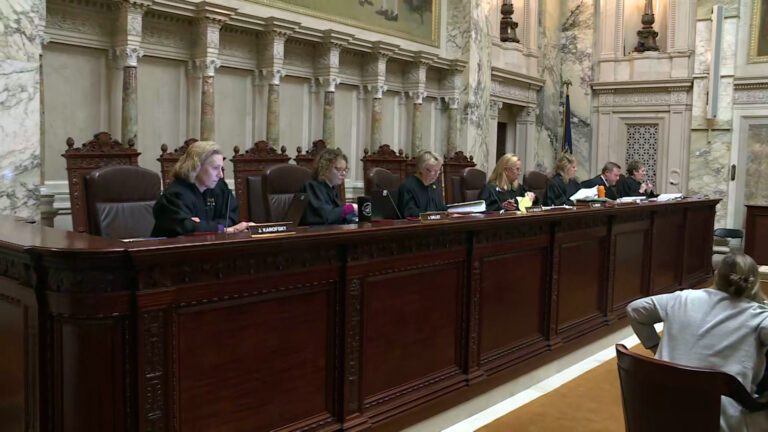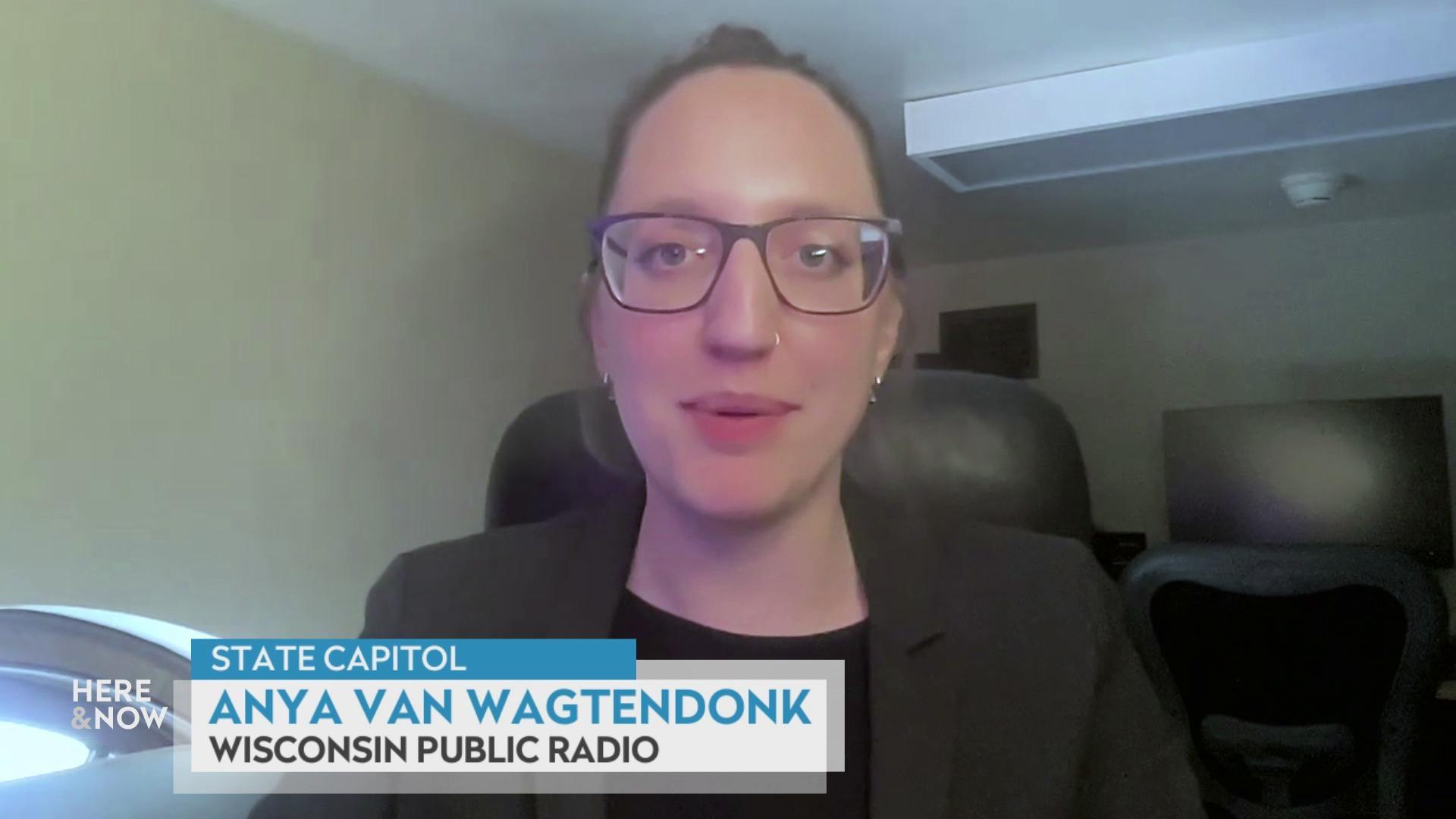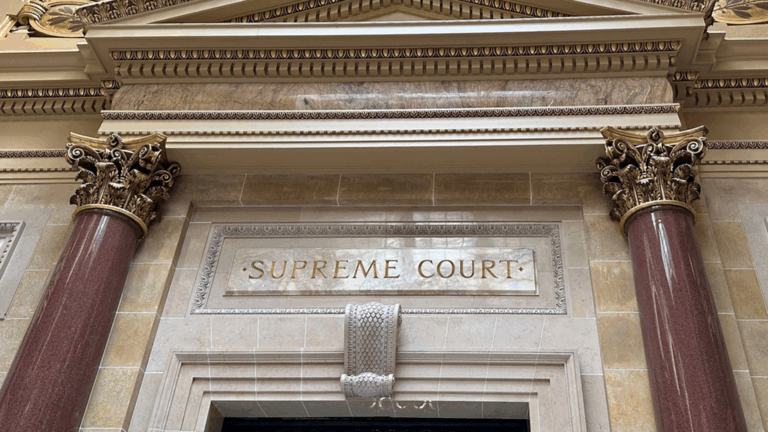John D. Johnson on the scope of Wisconsin's voting maps case
Marquette University Law School research fellow John D. Johnson outlines legal issues in a lawsuit challenging Wisconsin's legislative district maps and the wider political battle over gerrymandering.
By Marisa Wojcik | Here & Now
December 6, 2023
VIDEO TRANSCRIPT
Marisa Wojcik:
When it comes to the arguments that the plaintiffs brought in just bringing this lawsuit forward, based on your understanding of gerrymandered districts, is it valid?
John D. Johnson:
Well, the petitioners made quite a few arguments in their initial filing and the, without sort of evaluating all of the arguments, the current court decided that they would only consider two of them. One of them is about the definition of contiguity as used in the state constitution, and the other is about the separation of powers doctrine. Essentially that argument is that because the court chose a map that was vetoed by the governor, it was ignoring the separation of powers between the executive and the legislature. A law professor I've talked to thought that that one had some, that argument had some merit. The contiguity argument is a pretty tedious one. So in Wisconsin, the Constitution says that you should have territorially contiguous districts and also that you should try to keep municipalities intact. There are many municipalities in the state that are not themselves contiguous, that have weird little island areas that are disconnected from the rest of them. Not literal islands, just like pieces of land that due to annexation processes don't touch the main part of the town. And so the question is, in those situations, is it okay to keep a town intact even when that means that the literal pieces of land within that district don't touch each other? Or do you need to follow literal contiguity? Which I think the strictest interpretation of the Constitution would suggest in an early 90s federal court case, the judges in that case decided that literal contiguity was not a requirement, that you could have this sort of looser definition that took other considerations into account. And at that time, that was the answer that Democrats wanted and Republicans wanted, this more strict sense of contiguity. Now the shoe's on the other foot and both sides are taking a different position.
Marisa Wojcik:
One of the justices in particular was trying to get at this idea of partisan fairness and can you even use that as a definition when deciding districts? And I think one counselor was talking about Wisconsin as a split ticket state. And so how do you determine that in your analysis when you've studied these things, is there a way to factor in partisan fairness when looking at map fairness?
John D. Johnson:
Yeah, there are different ways of doing it. Proportionality is not the right way to do it. So the idea that the number of seats one side wins should be proportional to the share of the vote that they win, that way just doesn't work in a first-past-the-post voting system like we have. You can imagine if all 99 districts exactly matched the balance of Democrats and Republicans in the state, then when one party won 51% of the vote, they might win 51% of the vote in all 99 districts, winning 100% of the district. So if you try to think of a, like, actual proportional way of doing this, it just doesn't work. You have to use literal proportional representation to do that. But there are still ways of measuring this that make sense. So one that mathematicians have really pioneered over the last few years is using algorithms to generate enormous ensembles they say of hypothetical equal population compact contiguous maps of a state. And then you measure the partisan strength across those maps and you get a sense of what sort of underlying political geography the underlying baked in advantage one party might have. You do that in Wisconsin and you get, oh, in the neighborhood of 55, 56, maybe 57 seats leaning Republican in a 50/50 year. You know, right now we have, what is it, 60, 65, I think, Republican seats in the assembly. So that's a clear advantage beyond what political geography provides for in the map that we currently use. Another way of doing it would just be looking to see, okay, how big of a swing applied uniformly across all the districts would you need in order for one party to achieve a majority of the assembly versus the other? And then you can try to get that as close to what you think is fair, 50/50 as possible. What the petitioners that I heard suggested was during oral arguments was that rather than having a threshold in mind to begin with, you could take all of the plans that were submitted to you by, you know, the various parties in the state and pick the one that came closest to partisan equality in a 50/50 year.
Marisa Wojcik:
Do you think that is the way maps should be drawn?
John D. Johnson:
There are different ways of drawing maps. I think it's examples of systems that work pretty well are in Missouri and Michigan. In Missouri, they create commissions of, this is for the state legislative maps of I believe half Republicans, half Democrats. They require 70% of them to agree to a map. So it has to be a bipartisan group. If they fail to agree to a map by a specific date, then the judiciary steps in and draws a map and everybody just has to live with it. That's a good process, because it lays out exactly what happens at each step. So there's not this sort of like, "Oh, we don't know what happens if there's gridlock," which is the situation in Wisconsin. In Michigan, they do it differently in that they require independent commission to draw the maps, which cannot include politicians. So whereas the Missouri approach is bipartisan, the Michigan approach is more nonpartisan. And so depending on your sort of values, you might prefer one or the other. But those are two ways of doing it that don't include the sort of gridlock that we have now in Wisconsin and the potential for one party choosing the maps that they want to run under under the next decade.
Marisa Wojcik:
So based on your work closely examining Wisconsin and, you know, potentially other states, I saw you talk about the gerrymanderness of Wisconsin districts. How gerrymandered is Wisconsin?
John D. Johnson:
Quite, quite gerrymandered. You know, there's different ways you can measure it compared to other places across the country, but any metric I've seen places us among the most gerrymandered states in terms of a partisan advantage it gives one party. It's extremely difficult under the current maps, probably impossible in practical terms for Democrats to win a majority of the state legislature even when they're winning a majority of the votes statewide. In fact, it would be easier for a Republican party to win a supermajority of the legislature than it would be for Democrats to win a bare majority.
Marisa Wojcik:
What do you understand at least has to happen going forward?
John D. Johnson:
Well, the state Supreme Court will issue a ruling in this case. They could decide to reject the attempt to overturn these maps. They could overturn these maps on either or both of the grounds put forward, the contiguity or the separation of powers complaint. I think if they choose the separation of powers complaint, then they have to institute entirely new maps, because the complaint is that these maps should not have been chosen, because it was a plan vetoed by the governor. If they only throughout the maps on the basis of the contiguity challenge, then perhaps they would try to come up with a new map that only solved that problem. Because the contiguity issue does not affect every district. It affects about half the districts in the state. So depending on which arguments they may or may not find convincing, the remedy may be different. And then if they do decide to institute new maps entirely, I mean there's a lot of ways they could do that. They could ask the political branches to try again, the legislature and the governor to come up with something. I think that's unlikely. But they could, they could ask all those parties and anybody else in the state to submit maps and then they would somehow choose from amongst them or they could appoint their own special master to draw maps at their direction using the criteria that they instruct them to use.
Marisa Wojcik:
Considering that there's no change legislatively as to who is supposed to draw the maps and it's still just the legislature, could this continue happening over and over and over again?
John D. Johnson:
Yeah, I mean, we're making it up as we go along. That is true. There's nothing that caps the number of different maps that you use over the course of a decade. If the balance of power on the Supreme Court changed, you could be right back here again.
Marisa Wojcik:
OK. Is there anything for us layman's folk that you think is kind of most important to understand about this case about the maps?
John D. Johnson:
My impression from the conversations I have with people in Wisconsin is that those people who read the dues who are interested in following the state of democracy in Wisconsin are pretty tuned into how important redistricting is. And I don't think that was true a decade ago. And part of the reason for that, I think, is that redistricting is so much more consequential now. It's consequential because our technology allows us to more precisely target certain kinds of voters. I think a lot of people understand that. But the other reason why gerrymandering works so well today is that voters are dramatically more predictable in their behavior than they were 20 years ago. If you go back to 2000, the correlation between how somebody voted for president, the Democrat or the Republican, and how they voted in the assembly for a Democrat or Republican was correlated somewhere around 65%. And now that correlation is, you know, north of 95%, it's very closely correlated. And so in a fundamental way, gerrymandering works, because voters are so polarized between the parties. And I think that that means that really any solution is going to leave a lot of people deeply disappointed.
 Passport
Passport











Follow Us